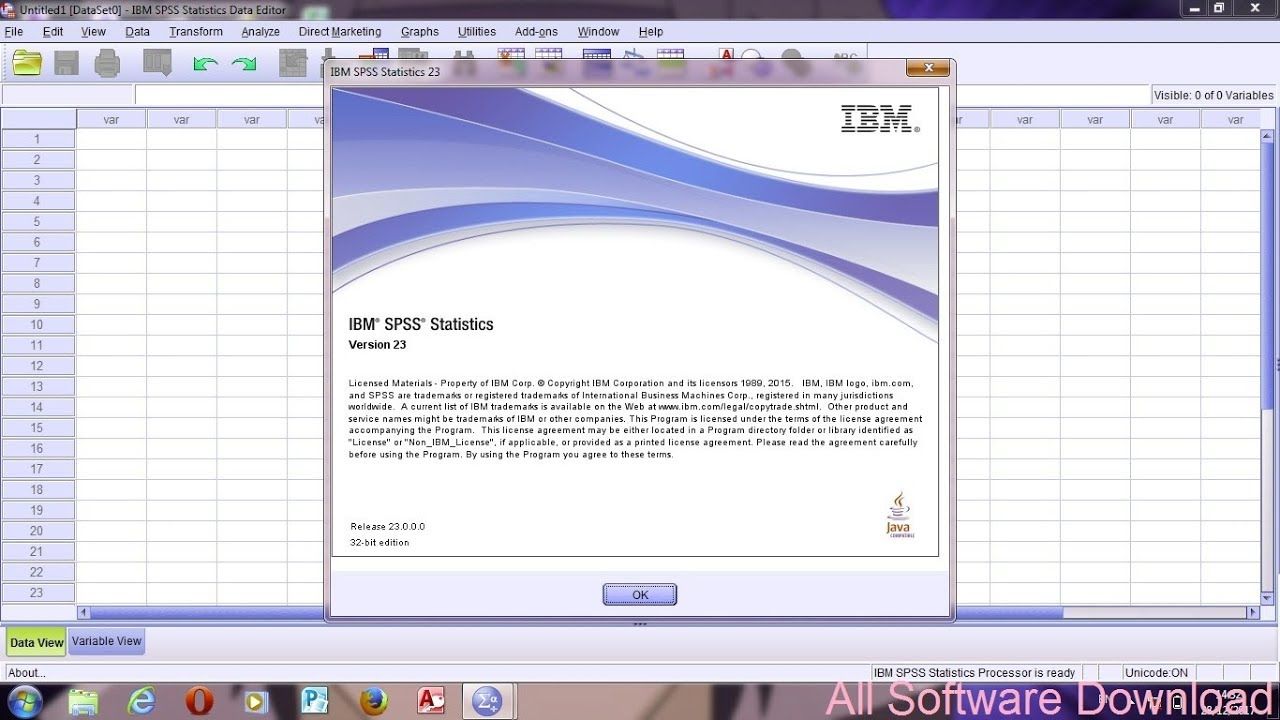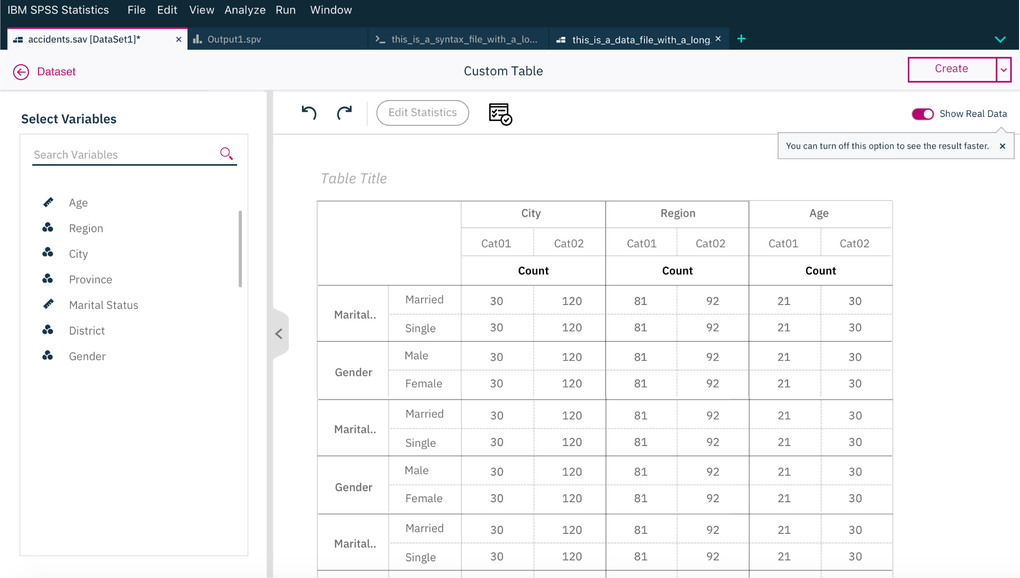

Distance or similarity measures are generated by the Proximities procedure. Analyze raw variables or choose from a variety of standardizing transformations.

In IBM SPSS Statistics Base, the factor analysis procedure provides a high degree of flexibility, offering:

You can be confident that you’ll always have the analytic tools you need to get the job done quickly and effectively. IBM SPSS Statistics Base contains procedures for the projects you are working on now and any new ones to come. Tests to Predict Numerical Outcomes and Identify Groups:

Nonparametric tests – Chi-square, Binomial, Runs, one-sample, two independent samples, k-independent samples, two related samples, k-related samples.Correlation – Test for bivariate or partial correlation, or for distances indicating similarity or dissimilarity between measures.ANOVA and ANCOVA – Conduct contrast, range and post hoc tests analyze fixed-effects and random-effects measures group descriptive statistics choose your model based on four types of the sum-of-squares procedure perform lack-of-fit tests choose balanced or unbalanced design and analyze covariance with up to 10 methods.Compare means – Choose whether to use harmonic or geometric means test linearity compare via independent sample statistics, paired sample statistics or one-sample t test.Descriptive ratio statistics – Coefficient of dispersion, coefficient of variation, price-related differential and average absolute deviance.Descriptives – Central tendency, dispersion, distribution and Z scores.Frequencies – Counts, percentages, valid and cumulative percentages central tendency, dispersion, distribution and percentile values.Crosstabulations – Counts, percentages, residuals, marginals, tests of independence, test of linear association, measure of linear association, ordinal data measures, nominal by interval measures, measure of agreement, relative risk estimates for case control and cohort studies.A wider range of R programming options enables developers to use a full-featured, integrated R development environment within SPSS Statistics.Enterprise users can access SPSS Statistics using their identification badges and badge readers.Stata 13 users can import, read and write Stata 9-13 files within SPSS Statistics.Enhanced categorical principal component analysis (CATPCA) capabilities.Completely redesigned web reports offer more interactivity, functionality and web server support.Embed analytics into the enterprise to speed deployment and return on investment.The Generalized Spatial Association Rule (GSAR) finds associations between spatial and non-spatial attributes.The Spatio-Temporal Prediction (STP) technique can fit linear models for measurements taken over time at locations in 2D and 3D space.Integrate, explore and model location and time data, and capitalize on new data sources to solve new business problems.
SPSS 23 DOWNLOADEN SERIES


 0 kommentar(er)
0 kommentar(er)
